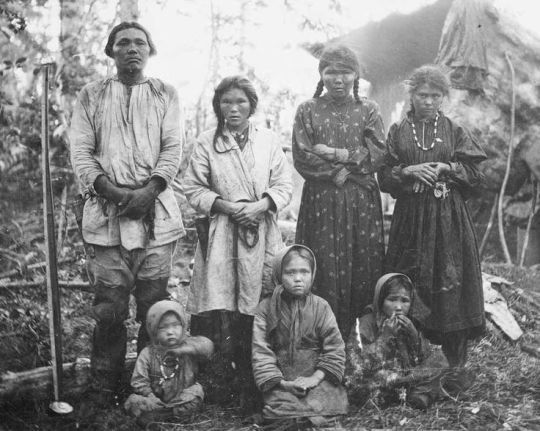#khanty
Text
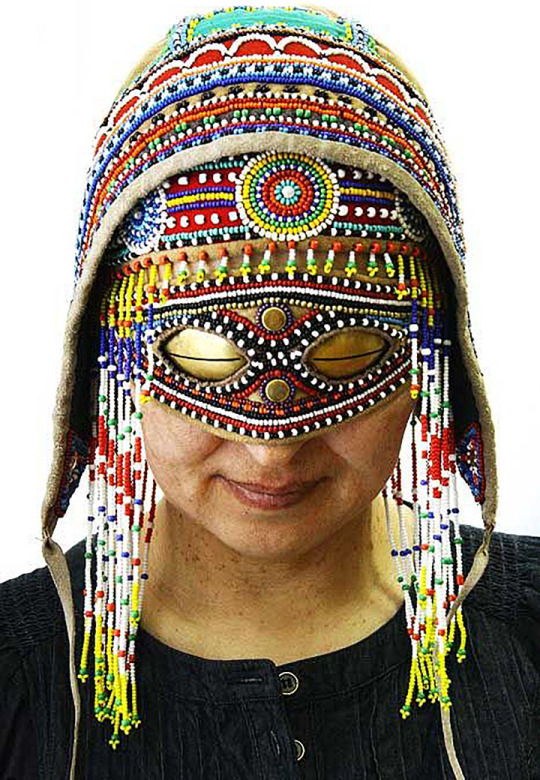



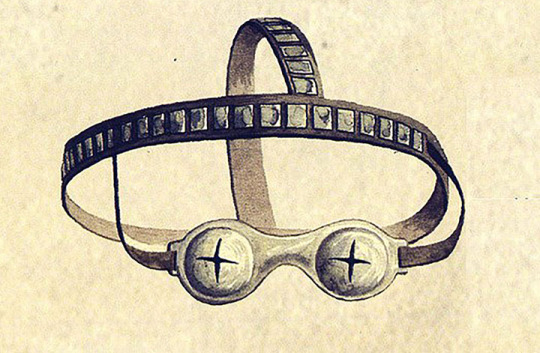
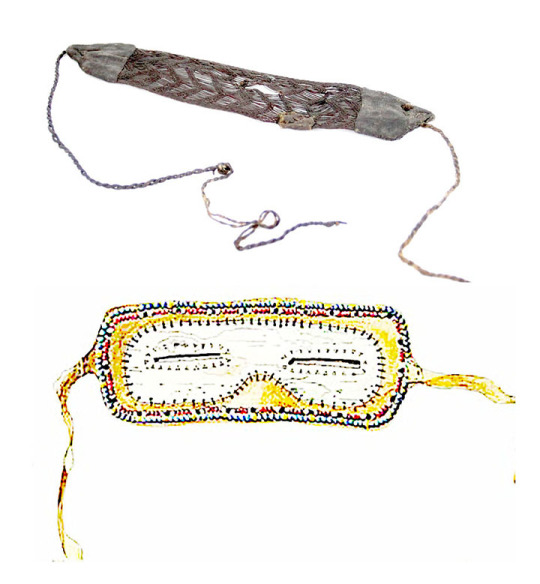


Siberian snow goggles from the Khanty, Nganasan, & Sakha
Toying with an idea here. The concept of the one-eyed Arimaspians has me curious if this was a nickname for people from the north who lived in places where snow goggles may have given the appearance of having a single eye. Given a far enough physical distance and passing through the gossip of enough different languages, by the time this info made it to the Greeks what began as a nickname may have sounded like these people were literal cyclopes. Just a thought. I assume people back then used eye protection from the snow, in some manner, just like people do today. Some of the snow goggles (both modern and historical) do give the appearance of a single giant eye, while others have two eye spots. I wasn't able to find much on this as far as historical info goes, and unfortunately I couldn't find images of the ancient grave finds the article talked about. The oldest of the discovered snow goggles being 2,000 years old from northeast Asia. I'm not sure if the initial black and white sketch is of the ancient goggles or not, the post didn't explicitly say. Below is whatever info I could find on historical snow glasses in Eurasia:
"In ancient times, like today, these goggles were made by skilled masters to combine effectiveness in blotting out the blinding light in some cases looking amazing.
Different ethnic groups across polar regions evolved their own distinctive style in snow goggles.
The most ancient known eyewear belong to the Old Bering Sea culture, the sites of which are located on the both sides of Bering Strait.
The oldest date for the culture - around 400 years BC - was obtained on Russian side, at Ekven graveyard, in Chukotka.
The peak of the culture is considered to be in second and third centuries AD.
At Ekven and also Uelen graveyards snow goggles made of bone were found, dating from the first to the fifth centuries AD.
Some were decorated with carvings, some not, and examples are shown here in these drawings.
Later the snow goggle tradition by Eskimos, for example the Inuits and Yupik, and the Chukchi people.
While there was an obvious practical use for the goggles, a variant of these ‘spectacles’ xxxx is believed to have been used by traditional shamans; for example a pair of goggles without holes of slips was found at Ekve
The Event and Dolgans people turned to metal in making the eyewear with copper or tin or silver goggles inserted into a half-mask made of reindeer skin or other pelt, or, later, cloth obtained from Russian incomers. Decorations with beads was also a feature.
The same type of goggles was also used by other Arctic people such as the Nganasan or Khanty. The British Museum even has some examples.
The tradition continues to this day and is thriving in Yakutia - also known as Sakha Republic, the largest region in the Russian Federation.
Going back in time, the Yakut people used a wide range of materials to make goggles - metal, birch bark, wood, bone, skin, and horsehair.
The goggles created from horsehair comprised strips of intricate net. A surviving 19th century example comes not from Yakutia but Tuva, the mountainous region in southern Siberia, now in a collection in the Irkutsk Museum of Local History.
Most of the metal goggles in Yakut collections are dated from between the 18th and early 20th centuries.
Again, some definitely had ritualistic uses: they were deployed by shamans, and not in everyday day life for use in snow.
Many Yakuts recall that their grandfathers had very simple goggles made of birch bark.
Local historian Prokopy Nagovitsyn said: 'The round shaped silver goggles began to make an appearance in 19th century, when there appeared many rich people.
‘The shape had a symbolic meaning - cross in the circle had been the symbol of the sun since neolithic times.
‘Yet the cross-shaped cuts are convenient not when you are in tundra, but when you, for example, climb steps.’
Most of the older goggles look rather simple - for example a metal strip with the small deepening for the nose and slots for sight. Others have two round metal discs with a slit to see through while blotting out most of the glare; these were fixed into a the mask of skin or fur."
-taken from SiberianTimes
#snow goggles#sunglasses#khanty#nganasan#sakha republic#antiquities#history#yakutia#siberia#arimaspian#british museum
1K notes
·
View notes
Text





Traditional outfit commissions: batch #3
#my art#artists on tumblr#character design#slavic#khanty#romani#romanian#furry#anthro#wolverine#badger#dragon#okapi#hydde draws
236 notes
·
View notes
Text
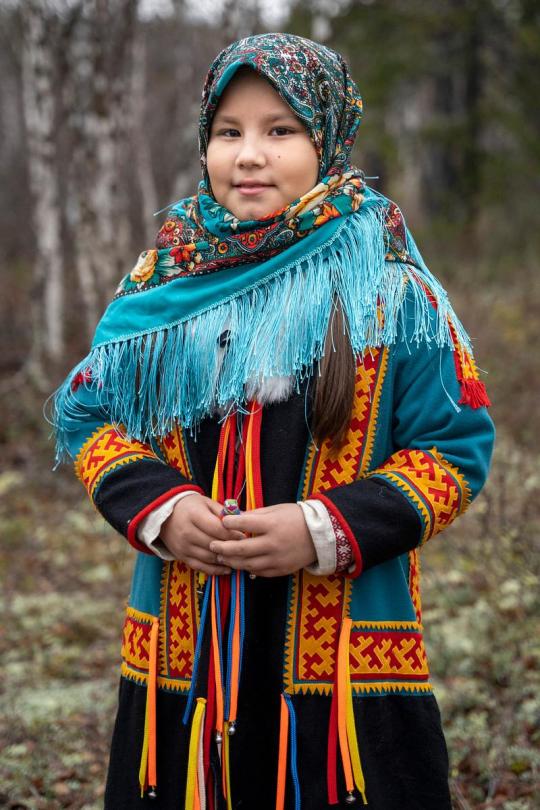
Khanty girl, Russia, by Antoine Boureau
#khanty#russia#asia#north asia#traditional clothing#traditional fashion#cultural clothing#folk clothing
311 notes
·
View notes
Text
People of Khanta (Khanty peoples) uploaded by bratscky_1224 on Instagram.
#khanty#Khanta#indigenous#culture#indigenous russia#indigenous russian#important#russia#fypシ#fypage#colonization#landback#land back#North#northern arctic#siberian indigenous#indigenous siberian#siberian#native people#native#natives#Siberian native#fypツ#fyp
40 notes
·
View notes
Text
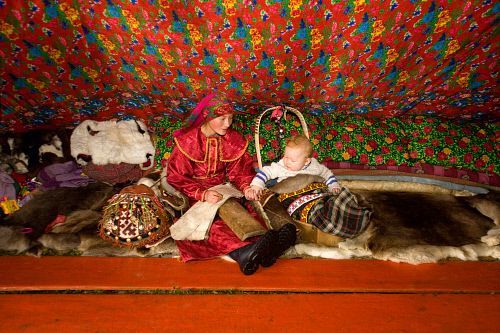
Kristina Neyva, a Khanty woman, sewing in her tent with her baby son, Kleb, by her side in a cradle. Polar Ural Mountains, Yamal, Russia
Source: https://pinterest.com/pin/659777414187589553/
3 notes
·
View notes
Text
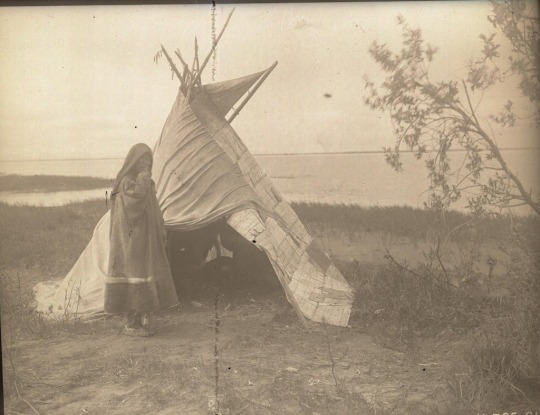
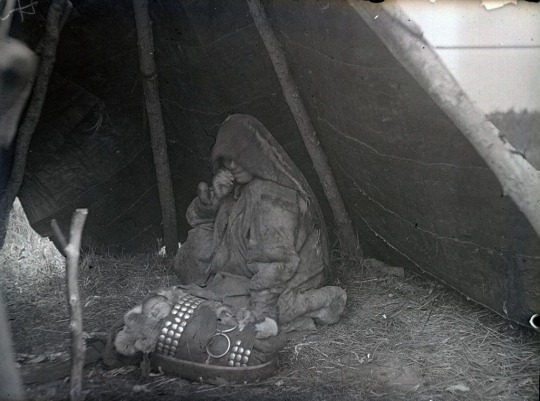
Chum, set especially for a woman in labor at the time of childbirth and newborn care. Khanty
Чум, поставленный специально для роженицы на время родов и ухода за новорожденным. Ханты
1936.
From Kunstkamera archive. collection A.V. Stepanovich
#Khanty–Mansia#Khanty#Ханты#Khanty culture#Культура Ханты#non-russian#indigenous russia#indigenous russian#Finno-Ugric
36 notes
·
View notes
Quote
At the beginning of the eighteenth century, the policy of the Russian State towards the Siberian peoples changed. The Russian political position in Siberia became stronger and more stable, in part because the Russian population had grown to outnumber the indigenous inhabitants of the area. The economic interests of the Russian State in northwestern Siberia turned to mining, iron making and the industrial development of the territories, and away from the fur trade. Russia was also rapidly developing into a powerful empire with a national identity of its own.
In 1701 the Russian Orthodox Church was ordered by Czar Peter I (known as Peter the Great) (1689-1725) to baptize the Siberian peoples. The Metropolitan Phielophey Leschinski, who made several voyages to Khanty settlements, conducted intensive missionary work during the period 1712-1726. Most of the Khanty were baptized during this time, hundreds of Khanty images of "longhs" -protectors- were burned, many sacred places where the Khanty held their meetings, worshipped and made sacrifices to their deities were desecrated and destroyed, and was usually followed by the erection of an Orthodox church or chapel on the same place. Thus the main aim of the mission was the destruction of the cult and ritual dimensions of Khanty religious traditions, and the introduction of Christian cult and ritual life. Yet, most of the baptized Khanty continued to worship their deities in secret and to perform the same rituals as their forefathers did.
To suppress the Khanty religious heritage, the main blows were then inflicted upon its ritual and social dimensions, namely the Russian authorities made an attempt to destroy sacred places (ritual space) and persecuted shamans (the religious authorities). Besides the missionaries were struggling not only against Khanty religious heritage, but also against their ethnic heritage. They insisted that baptized Khanty had to leave behind their traditional dwellings, dress, cuisine, customs for good. Yet, the supervisors appointed to observe Khanty everyday life often reported cases of people practising shamanic séances even by those who were baptized. (...)
Those who were accused of performing shamanic séances in 1747 admitted under torture that they indeed had a deal with [the] devil while practising shamanism. The usual penalties for practising shamanism or inviting a shaman to perform a séance in the eighteenth century were fines, imprisonment and public corporal punishments. Sometimes, torture during an inquest in prison, or following corporal punishments, caused the death of the accused shamans. This severe politics towards the beliefs of the indigenous peoples had changed by the end of the eighteenth century. (...)
A new wave of missionary activity occurred on the eastern frontier of the Russian Empire during the nineteenth century and Christian ideals gradually penetrated further into Khanty life. Radical economic and lifestyle changes affected Khanty people in regions where the Russian population predominated, and it was inevitable that they would become Russified. As to the majority of the Khanty, even if they were baptized by that time, numerous priests and explorers reported that the Khanty (as well as other Siberian peoples) did not attend church on a regular basis, did not follow Christian ethics, and kept making sacrifices to their indigenous deities. Missionaries were faced with the problem of making baptized Khanty follow the prescribed Christian disciplines which, given the nomadic Khanty life as hunters, fishermen and reindeer herders, was difficult.
The Russian State interests of that time were understood by the majority of Russian society as a quick and absolute incorporation of all non-Russian peoples into the Russian Orthodox community structure, which inevitably implied ethnic acculturation. Converted Siberian peoples were expected to become “Russians”, live like Russians, speak Russian, to be faithful Orthodox believers and active parishioners. From this time, intensive theoretical work actively pursued the elaboration of missionary programs and special missionary organizations to fulfil them. A network of schools for training missionaries appeared at that time; work on the translation of Holy Books into Native languages were activated and supported; special instructions and recommendations for missionaries were published. Most of the missionary thinkers agreed on the necessity and advantage of Russification for the indigenous peoples in general, although they did not agree on the methods, terms and priorities in a process of its realization in practise. Some of them thought that Russian language and education should be used as the main tool in a process of successful introduction of the new religion. Others argued that promoting the achievements of European civilization in indigenous everyday life would have achieved it much better.
Some excerpts from Elena Glavatskaya’s 2004 article “Religious and Ethnic Revitalization among the Siberian Indigenous People: the Khanty Case” (you can download it here) about the Russian Empire's policies of forced Russification of the Siberian indigenous people, here focused on the religion of the Khanty people (and how this was related to language and other cultural practices).
#khanty#siberia#indigenous#stateless nations#russia#history#russian empire#russian history#Ханты#ostyaks#khanti#asian history#indigenous history#christianity#colonization#imperialism#freedom of religion#religious freedom
101 notes
·
View notes
Text
The Controversy of Uralic Peoples as Mongoloids


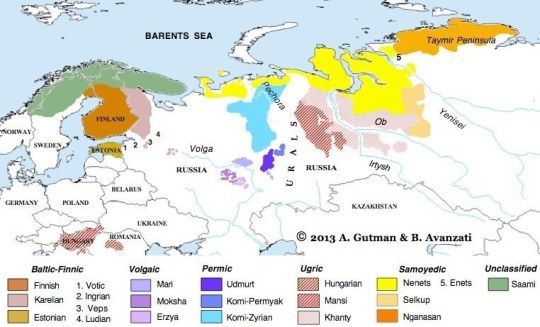

During the age of European nationalism, Finns, Hungarians, and Estonians have often had the concept of their Whiteness challenged. Some individuals have even gone out of their way to classify these three collectives as a part of the Mongoloid (East Asian) race. The strongest evidence for this claim had to do with linguistics. In the 21st century, many individuals only recognize language to be a fluid construct that has no indication of race. However, Europeans of the late 19th and early 20th century perceived language as an ethno-racial marker.
Some Western Chauvinists theorized that their shared identity of whiteness was partly ingrained in their common linguistic heritage. A broad language family identified as "Indo-European" is what loosely bound the white race together. The Finnish and Estonian tongues, however, are derived from the "Finno-Ugric" or "Uralic" language family. Because of this discrepancy, the Uralic peoples were considered Orientalized by their lack of linguistic kinship. In addition to a difference in language, certain Uralic populations also possessed physical features similar to that of East Asians. Most notably, ethnic groups like the Khanty and Mansi have pronounced epicanthic folds and maintain distinct linguistic ties with the Hungarians. These linguistic and phenotypic attributes indicated that, although the Finns, Hungarians, and Estonians appeared to be white Europeans, they were, in actuality, descendants of the Mongoloid race. These racial designations were not merely trivial ideological conflicts either. We see its impacts demonstrated when, in the United States, early Finnish immigrants were not considered white. In their book, Peter Kivisto and Johanna Leinonen note how a Finnish gentleman was denied American citizenship due to his Mongoloid origins.
This condescending view of the Finns was even shared by their fellow kin from Central Europe, the Hungarians. But why? Why would the Hungarians, a fellow Uralic-speaking people, deny any sort of linguistic/lineage tie with the Finns? This rejection is rooted in several factors tied to race, culture, and politics. In terms of politics, Hungarians have often tried to ease themselves into the sphere of pan-Turkism. This was especially prominent during the era of European nationalism when pan-Slavism was perceived as a threat to Hungary. In a reaction to Pan-Slavism, the Hungarians have often hearkened to their steppe ancestry as proof to be included as a part of a Turkic union. In addition to political factors, Hungarian history has instilled a strong sense of pride in their descent from hardened steppe warriors. The Hungarian nationalists envision themselves as the perfect syncretism of equestrian valor and . However, this romantic imagery is removed by asserting that Hungarians are related to the Uralic people. Uralic people, who were not steppe warriors, but lowly fishermen from the baron reaches of northern Europe.
The Nordicists sought to reinforce Hungary's shared origin with the Finns by emphasizing their cranial similarities. In his work Intra-Nordic Differences, Suvi Keskinen writes:
"Anders Retzius, Professor of Anatomy and Physiology,
developed a skull index to investigate “longskulls” and “shortskulls,”
coming to the conclusion that the Finns, the Sámi, and Hungarians
were to be placed among the Turanian type, understood as of Asian
origin"
Finland's history of being colonized by Sweden only added to the narrative that Uralic people were naturally meant to exist as subjugated people. This was in no way appealing to the Hungarians who sought independence from the Austrian Empire. This degrading portrayal of Finns as a subjugated and primitive race caused Hungarians to distance themselves from any sort of shared identity. In the book Languages and Publics, by Susan Gal and Kathryn Woolard, the authors note that a certain linguist was disgusted at the notion of having any sort of ancestral lineage to the Finns. In contemporary times, however, Hungarians have largely come to accept their place as members of the Uralic language family. Though others may stress the possibility of Turkic roots, one cannot deny the distant Siberian influence present across all Uralic peoples.
As the era of nationalism waned, the focus on race and ethnicity also diminished. The tumultuous aftermath of World War 2 prompted European nations to reconsider their relationships with neighboring countries. This shifting landscape gradually relieved the burden on Finns, Hungarians, and Estonians to constantly affirm their place within the Western sphere. The post-war period brought a nuanced perspective, allowing these nations a respite from the need to continually assert their Western identities.
Book Sources:
Kivisto, Peter, and Johanna Leinonen. “Representing Race: Ongoing Uncertainties about Finnish American Racial Identity.” Journal of American Ethnic History 31, no. 1 (2011): 11–33. https://doi.org/10.5406/jamerethnhist.31.1.0011.
Map Sources:
Morton, Samuel George. 1839. Crania americana or, A comparative view of the skulls of various aboriginal nations of North and South America. To which is prefixed an essay on the varieties of the human species. Illustrated byseventy-eight plates and a colored map., Philadelphia : J. Dobson; London : Simpkin.Marshall & co.
Map of human races (Meyers Konversations-Lexikon, 1885–1890)
#finland#finnish#magyar#hungarian#history#anthropology#nordic#uralic#linguistics#america#united states#sámi#europe#western civilization#maps#turkic#nomad#mongolia#asian#mongoloid#national identity#country#estonia#khanty#finno ugric#carpathians#ethnicity#hungary#european#suomi
2 notes
·
View notes
Text
Photos from Охотничьи Лайки (Hunting Laiki) by А. Т. Войлочников (A. T. Voylochnikov) and С. Д. Войлочникова (S. D. Voylochnikova).
Top two images are of West Siberian Laika heads, first a "highbred" one (per DeepL translation) and then a Khanty type WSL.
Below is a East European Laika from the Evenki National District.
I'm only able to roughly translate russian currently so *please* correct me if I make any errors on these!

#hunting laiki#a. t. voylochnikov#s. d. voylochnikova#west siberian laika#east siberian laika#laika#hunting dog#khanty type#khanty type wsl#evenki type#evenki type esl#evenki#khanty#my library
10 notes
·
View notes
Text
"Good afternoon, dear friends! Today we have gathered to celebrate the ancient holiday of the peoples of Khanty and Mansi. The wagtail holiday-the holiday of waiting for a warm summer!"
"Over Konda the ice sparkled, it did not let the water dance, the wagtail flew in, the ice turned gray, and it began to crumble. The ice floes creaked with a roar, taking the frosts into the distance. She broke them with her tail, little bird, and it’s not a pity!"
*A song*
"The Khanty and Mansi revere us, the Wagtails, very much."
"And the Kondinsky Mansi devoted a whole holiday to us, so there!"
"And the Khanty believe that the wagtail brings happiness, and that's certainly true, for that, they call us: "йис туты вой" - ("soul-bearing bird")."
"Hah! And the southern Khanty believe that thanks to the wagtail, children begin to speak, and this is true, true, true! Because when we fly south in the fall, we leave them - hmm! - a speech!"
And the women, talking with the wagtail, ask her to help the children, protect them.
And also the Mansi say that-
*talk over each other*
"Ah!" A third wagtail pushes them apart.
"Boasters! You boast, but don't look around!"
"So what?" They both say.
"You see, there's ice everywhere!"
The ice waves their hands. "Hey!"
"The winter must want to return!"
"Ah! But we've smashed it all! For warmth and light to come! And there they are again-!" She swats her wing at them. "-Frozen..."
"Alright, sisters, don't panic! We broke it once - we will break it again! And no problem! So what are we waiting for? Let's get to it!"
"Let's go!"
"What is it?! It doesn't work! Let's stomp on it."
"Again doesn't work! Let's knock?"
"Still doesn't work!" "Let's dance?"
"Doesn't work, let's spin around. Harder, harder girls!"
"Let's walk in circles. Faster, faster let's spin it! Go on, go on!"
"It doesn't work at all! Well, what to do now?! We can't break the ice!"
The ice closes in on them, taunting.
"Scram!" The wagtails swat at it. The ice backs away and laughs.
"I know! Let's ask the kids to help us!"
"Well, I don't know, I don't know! What if they won't manage it?"
"Well, let's try! Will you help us?"
"Yes!"
"Alright! Repeat all the moves after us!"
"Let's melt that ice! Let's break it. Prepare your little wings!"
"Yeah, show him! The ice has moved!"
"Hurray! Thank you!"
"The old winter sure gave us trouble this year."
"Yes, almost ruined all summer!"
"Oh, look who's that over there? Ah, that's Mother-of-mothers! Only... She looks at us way too angrily! Oh, what happened to her?"
Mothe-of-mothers walks around with an icy glare. "... She doesn't recognize us..."
"Who has broken all of my ice?!" "That was us, we did it!"
"I wanted to freeze the hearts of humans-" "Ghasp!" "So that they couldn't enjoy the summer's light and warmth!"
"Oh, sisters, isn't Mother-of-mothers bewitched by that mantle?"
"Gasp! Right, we must get it off her quickly!"
"There is no way! You won't succeed!"
"Kids, help us, help us! Let's blow away that awful mantle off of the Mother-of-mothers! Inhale!"
"On the count of three let's blow very hard at the Mother-of-mothers together, and take off that mantle!"
"One...Two...Three! Blow!"
"Oooh!" Mother-of-mothers gets blown away towards the ice.
"Again, one more time!"
"Ooh!" "Again, do it again!"
"Ooh!"
"Huzzah!"
"Oh! What's happening here? Why are you trying to blow me away?"
"Yes, we did it! The spell is off!
"We, respected Mother-of-mothers, we're saving you from the mantle the winter has cast on you, bewitching you. She wanted to freeze everyone!"
"Oh, she's tricky! Doesn't want to give up. But it's summer already! My dear messengers of summer light and warmth, thank you!"
"And thank you, kids!"
"I ask the spirits of the sky to send us a hot long summer. Warm rains, so that the berries would appear as soon as possible. Let the rivers and lakes be full of fish, and the forests of beasts!"
"Mother-of-mothers, let's test how well the kids know our birds!"
"Yes, let's play our favorite game, that's called-"Guess who's voice.""
"Let's play?"
"Yes!"
*Play the game* (I don't feel like writing all that. Maybe later.)
"Good job, kids!"
"My dear adult daughters and sons- Oh!" The men with drums walk in "Haha!"
"My dear children, I congratulate you on the holiday of the wagtail! The first summer bird has flown, the sacred little bird has flown. The winter won't come back!"
"Hurrah!"
"My dears, it's time for us to depart. Piece to you, kind people!"
The woman sings.
"A warm summer to you! Fareeval!"
Speaks language
"Whole hands to you whole legs, live happily, and have good thoughts!
speaks language"
walks off stage.
2 notes
·
View notes
Text
youtube
Song: Ma Pilyem (My Better Half)
Artist: Uljana Nikolaevna Randimova
Album: Sibérie 11 - Chants de L'ours, Harpes & Lyres Des Rives de L'Ob (Bear Songs, Harps and Lyres from the Banks of the Ob River)
2 notes
·
View notes
Text
Important read.
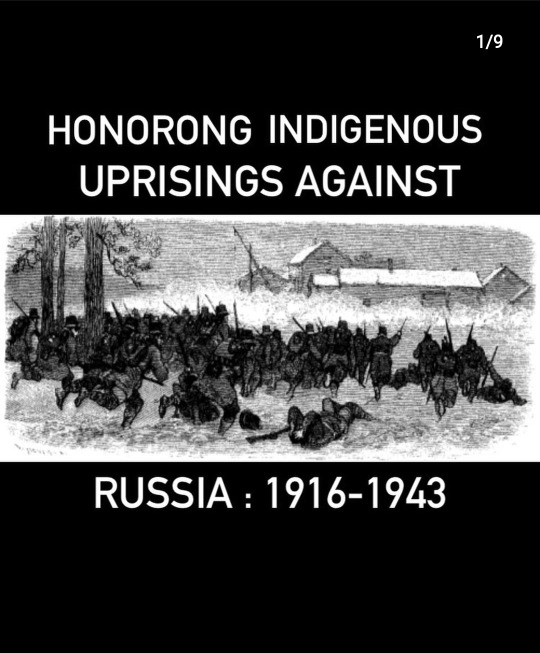
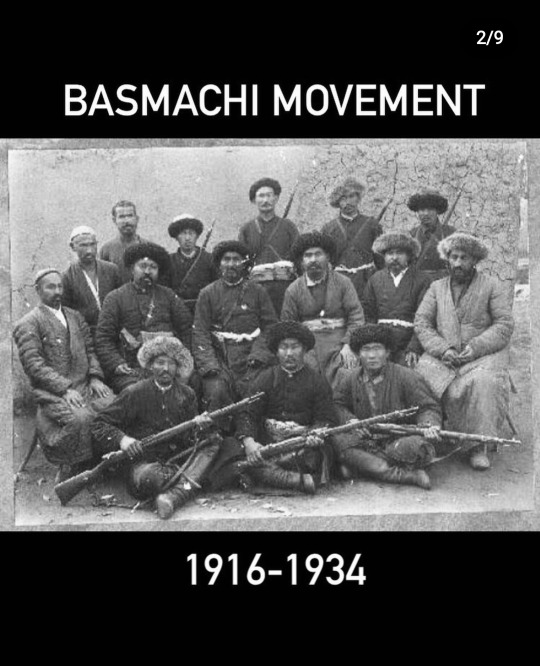
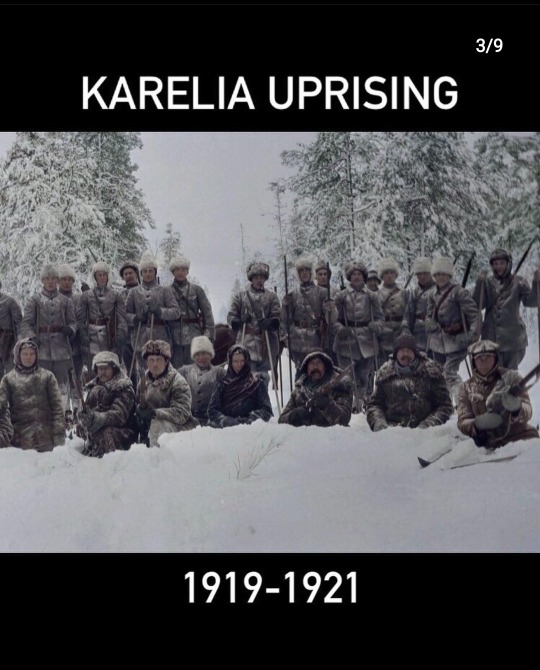
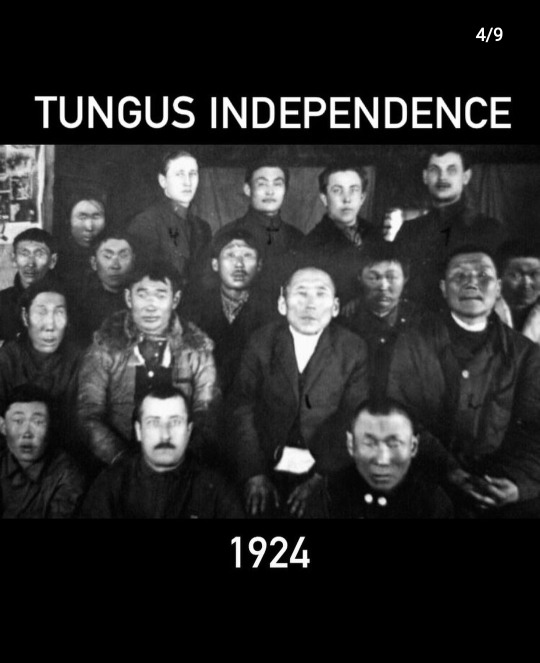





#indigenous#culture#indigenous russia#indigenous russian#russia#important#fypシ#colonization#fypage#landback#Khanty#sakha republic#Nenets#turkistan#indigenous rights#indigenous people#resistance#russian imperialism
69 notes
·
View notes
Text

Khanty girls.
Source: https://pinterest.com/pin/3377768461881844/
1 note
·
View note
Text


Ostyaks(Khanty). Peoples of Russia Series 1907-1917
Ханты. Серия "Народности России". 1907-1917
models by Pavel Kamensky
автор модели Павел Каменский
#non-russian#indigenous russia#indigenous russian#Khanty–Mansia#Khanty#Ханты#Khanty culture#Культура Ханты
20 notes
·
View notes
